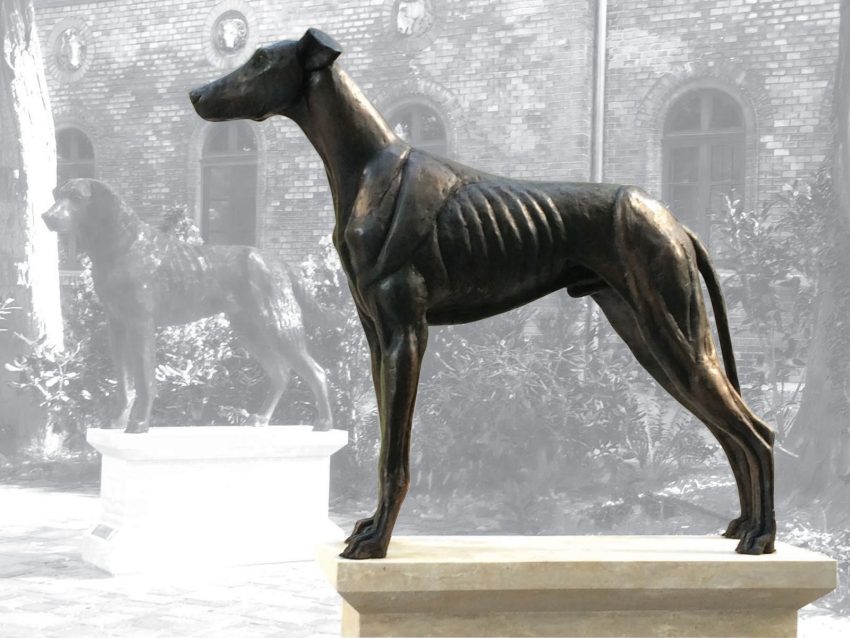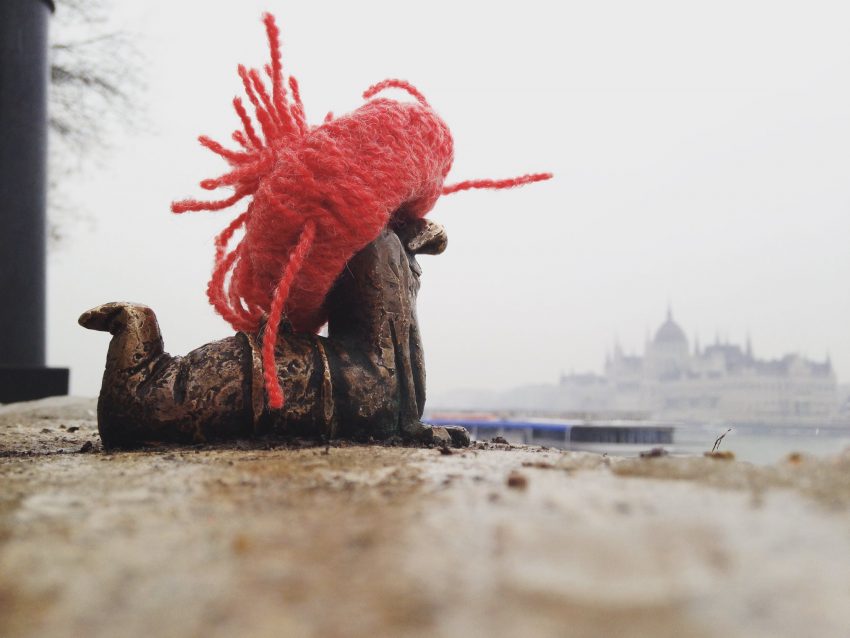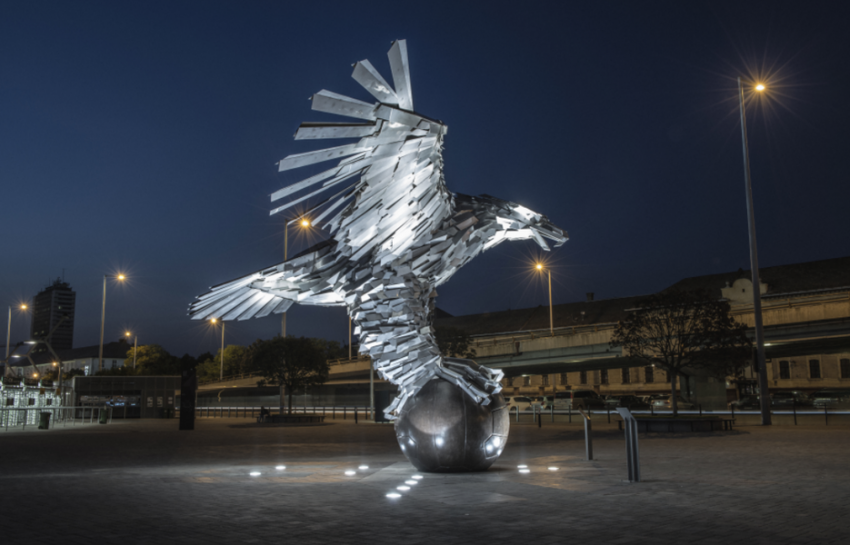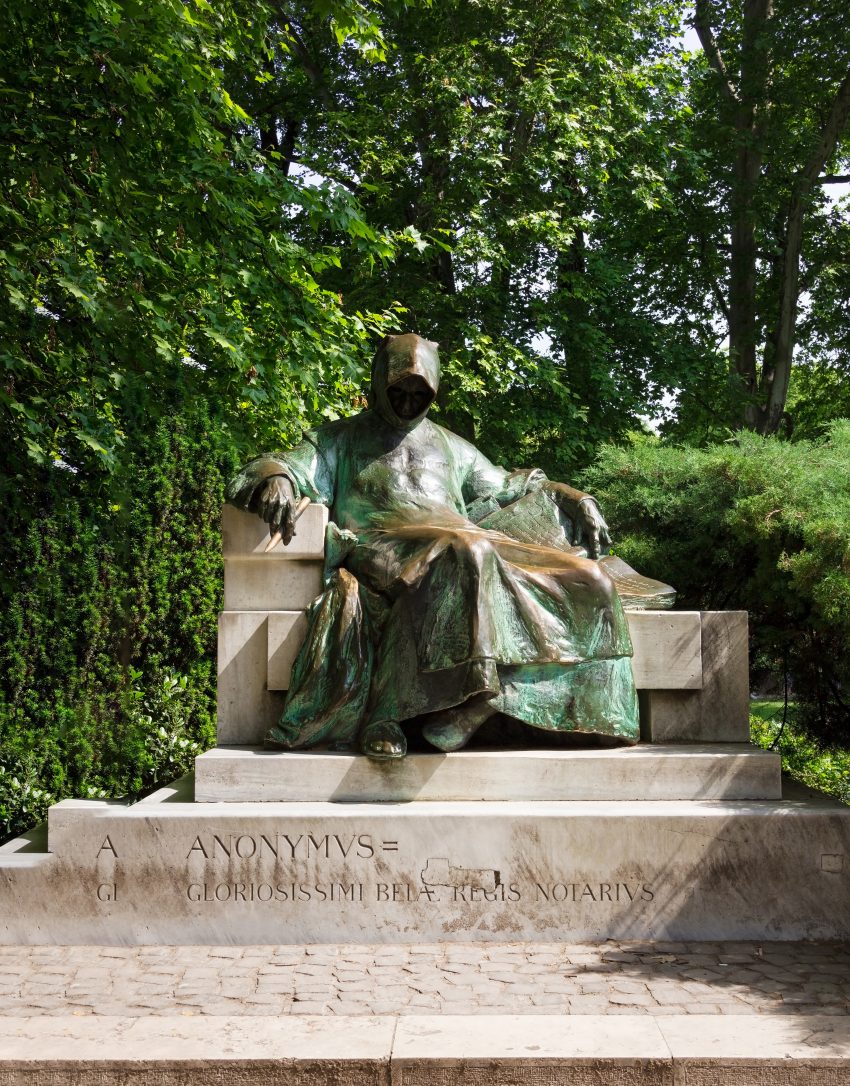Public art enriches our physical environments, supports local identity through providing an access to aesthetics, makes cultural heritage a tangible community asset, opens eyes, makes public spaces more approachable, and most importantly, brightens your mood. In this month’s Budapest Uncovered, we’ll introduce you to some of the city’s most peculiar statues and the stories behind them.
The Dogs of the University of Veterinary Medicine
Located on the umbrageous campus of Budapest’s University of Veterinary Medicine (founded in 1787, the university also functions as an animal clinic), sculptor Gábor Benő Pogány’s group of statues showcases the nine traditional dog breeds of Hungary, arranged in a circle around a ring-shaped wooden bench. Made of bronze and unveiled in 2016, the canine collective comprises of a pumi, mudi, puli, kuvasz, komondor, Transylvanian hound, Hungarian greyhound, Hungarian vizsla, and a Hungarian wirehaired vizsla statue, but the surrounding parkland gives home to a number of other attractions worthy of our attention, such as the imposing statue of a Hungarian grey cattle bull (sculpted by Béla Domonkos), or Imre Steindl’s Neo-Renaissance brick-buildings.

Miniart
One can walk past the statues of Ukraine-born Hungarian sculptor Mihály Kolodko every day without even noticing them. The reason? They’re extremely small. Kolodko’s first miniature statue, portraying the worm Főkukac from the Hungarian cartoon series A nagy ho-ho-horgász, was planted in front of 15 Bem rakpart in 2016. Since then, the sculptor has erected more than a dozen statues citywide, including the scaled-down model of a travel-ready Franz Liszt at the Budapest Airport, a tiny Rubik’s cube located opposite of the Parliament on the side of the stairs leading from Batthyány tér to the Danube, a squirrel who committed suicide hidden neatly behind the statue of detective Columbo in Falk Miksa utca, and the rabbit with checkered ears at the top of the Castle Hill Funicular.

Wooden Monsters
On the opposite extreme to Mihály Kolodko’s miniature sculptures, you can find the monumental public animal installations of Gábor Miklós Szőke. Besides Budapest, the works of the world-renowned Hungarian artist can be found in Italy, the United States, Austria, Russia, Bahrain, Slovakia, Croatia, and Romania. To get a comprehensive look at Szőke’s unique style (characterized by the use of hardwood and stainless steel, and a dynamic blend of French romanticism and industrial chic), pay a visit to his studio at the former factory grounds of Csepel Művek. You can also spot the sculptor’s beastly structures in the courtyard of downtown ruin bar Doboz, inside the lobby of Hotel Clark, in front of Várkert Bazár, and the Epreskert Art Colony in District VI.

Woman On the Balcony
If you’re strolling along Thököly út and have a sharp eye, you can easily catch the figure of a young woman, leaning over the railing of 61 Thököly út’s first-floor balcony and gazing into the distance with a yearning look on her face. The eerie sculpture has been frozen in a state of constant alertness since the 1912 construction of the 4-story high apartment building, designed for the wealthy sewing machine magnate Manó Pápai by Lajos Ybl, the nephew of renowned architect Miklós Ybl. According to one legend, the statue depicts a woman watching on as his husband leaves for WWI. She would spend hours every day for the next few years leaning over the balcony in hopes of spotting her returning spouse. When she received news of her husband’s death, the woman dropped dead instantly. The death notice proved to be wrong, and when the husband came home from Russian captivity he set up his late wife’s statue and walled off the balcony. The truth, of course, is a little bit less poetic: the statue was inspired by the stone women of the Bourges Palais, whose photograph was shown to the architect by his son, Ervin.

Anonymous
Opposite of City Park’s fairy-tale-looking Vajdahunyad Castle, a hooded, faceless man sits on his heavy, white marble throne, holding a pen in his right hand, his legs positioned nonchalantly and covered by his wrinkled cloak. It is the sculpture of Anonymous, the famous medieval notary of King Béla III, and author of the Gesta Hungarorum, a book about the origins of the Magyars and their conquest of the Carpathian Basin. The statue was created in 1902 by Miklós Ligeti (born Móric Lőwy), a follower of Rodin, and the same person who later on sculpted the above-mentioned leaning woman of Thököly út. Donated to the Hungarian nation by the Austro-Hungarian Emperor Franz Joseph, this enigmatic and ominous piece of metal is one of the most iconic sculptures of Budapest, as well as a popular site of pilgrimage: writers from all over the world stroke the shiny tip of his pen for inspiration or to become better at their craft.


